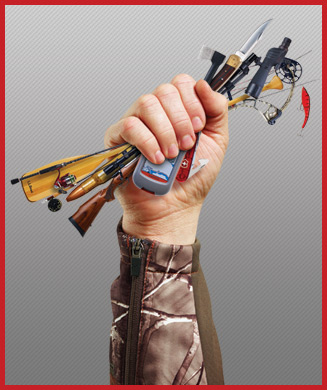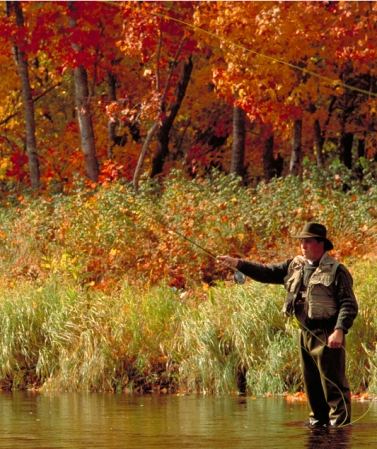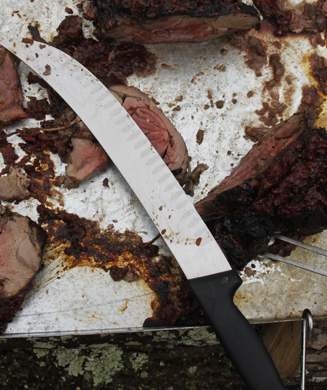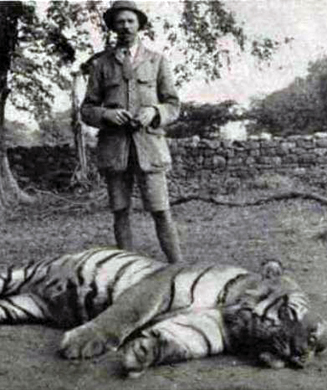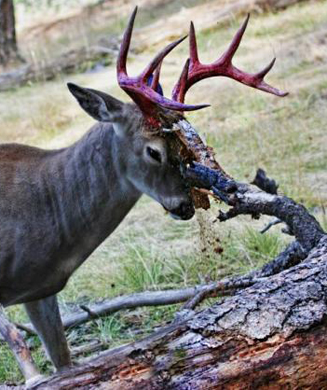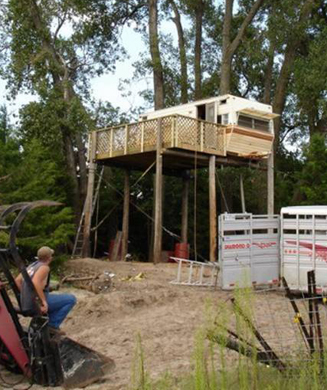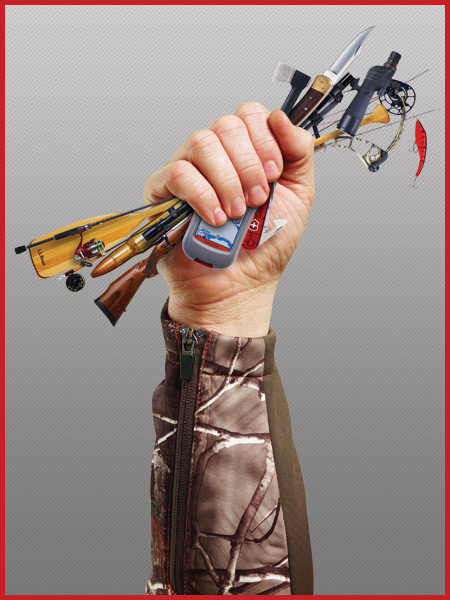
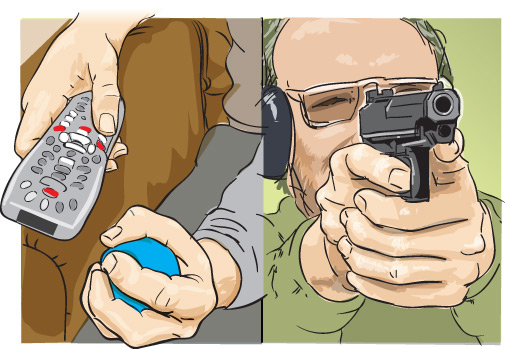
Competition handgun shooters often strengthen their hands and wrists by squeezing a rubber ball. Do this while watching television or for 10-minute stretches throughout the day, and the steadiness of your handgun aim will improve considerably.
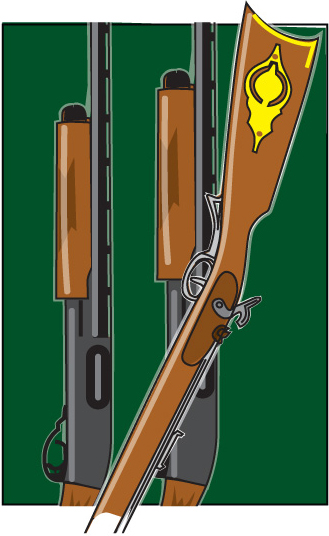
Always store your blackpowder rifle with the muzzle down. This keeps oil from collecting at the point of ignition. Proper storage can eliminate many misfires.
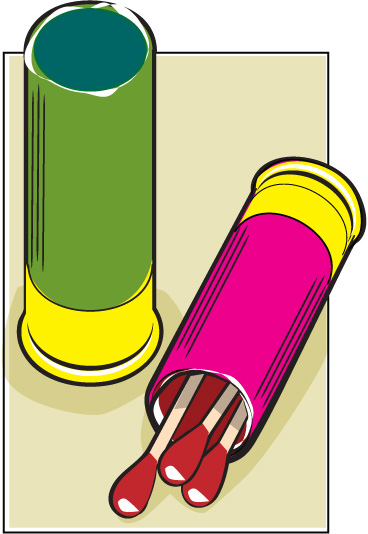
In a pinch, two empty shotshells (one 12-gauge and one 20-gauge) will fit snugly together to make a case for matches or other small items.
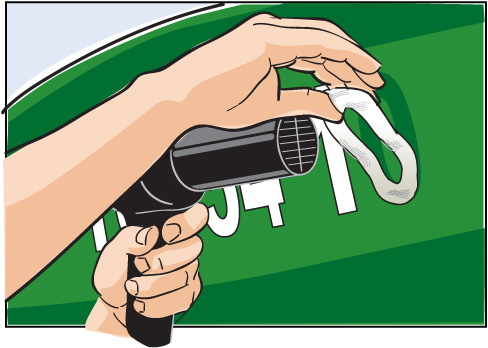
You can scratch your boat's finish if you use a razor blade to remove old vinyl registration numbers. Instead, use a blow dryer set on low to heat each number. This softens the adhesive so numbers will peel off easily.
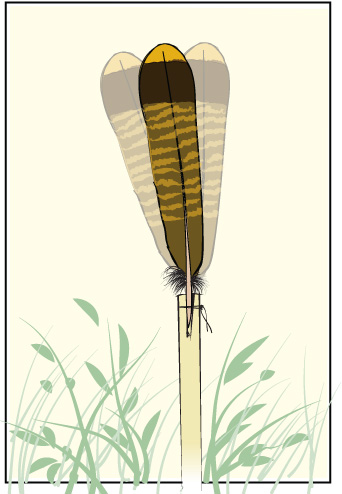
You've no doubt seen motorized rabbits that shake all over to help callers attract foxes, coyotes and bobcats. These work, but are a pain to lug around and set up, not to mention the cost of buying your robotic bunny.
A simpler, less expensive attractor can be made from a turkey tail feather tied to one end of a notched wooden dowel with a piece of thread.
Push the dowel upright in the ground. When the feather blows in the breeze, it will provide just the right amount of movement to help coax wily predators to come in for a look.
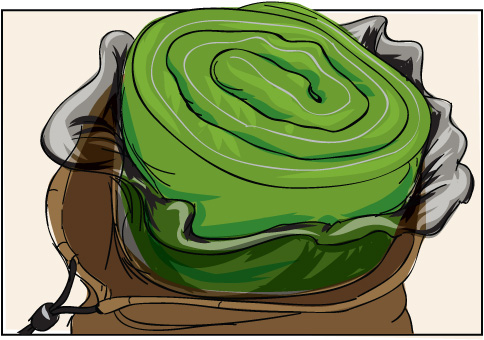
Line your sleeping-bag stuff sack with a heavy-duty garbage bag to keep your sleeping bag dry in any weather. Place the plastic bag inside your stuff sack, then stuff the sleeping bag inside. Compress the bag and close with a twist tie.
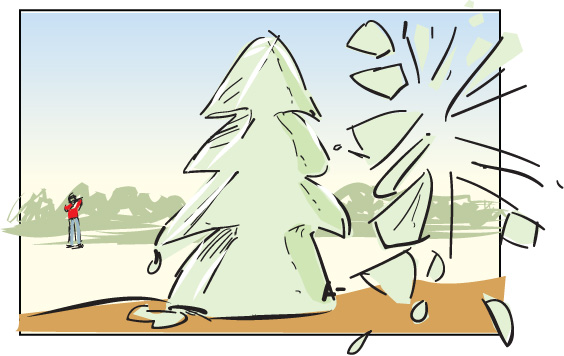
When plinking with a .22, make fun-to-shoot targets by using trays that mold ice into shapes like fish, stars, trees, boats and hearts. The ice explodes when hit, and there is no litter to clean up.
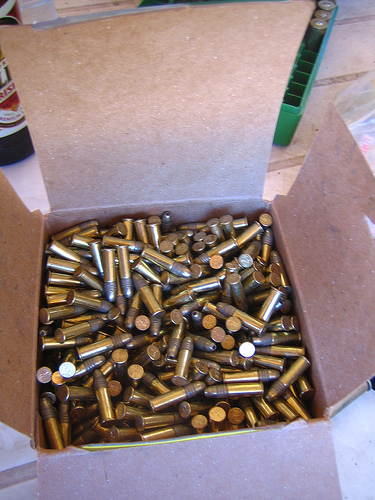
A .22 is the best tool available for curing shooting problems such as flinching. Ammo is inexpensive and practicing with a .22 helps to reinforce the basics, like trigger squeeze, breath control and follow-through. 9 | Make Sure Your Stock Fits
If you have trouble hitting rising birds, the problem may be your shotgun's stock length. A stock that's too long tends to make you shoot low and restricts your ability to swing with a bird.
A stock that's too short makes you shoot high. Have a gunsmith check your stock and adjust it to fit you. 10 | Keep Your Head Down
Lifting your head off the stock is one of the primary causes of missed targets when shotgunning. Keep your head down until the shot has been fired; then keep the muzzle moving to complete your follow-through.
**
11 | Practice With A Low Gun**
It pays to shoot some clays with a dismounted, or "low," gun.
Next time you're on the skeet or sporting clays course, call for a few birds with your gun held in a field-carrying position. Practicing like this will help you feel more comfortable when birds rise in the field. 12 | Exaggerate Your Follow-Through
When shotgunning, follow-through is vital. Keep swinging as you pull the trigger, the same way a golfer or a tennis player follows through on his swing after hitting the ball.
Don't stop the gun
or you'll shoot behind the target. 13 | Keep Your Ammo Safe
Don't be tempted to spray penetrating lubricants such as WD-40 on or near your ammunition. Such products can dissolve waterproofing sealers around the primer and bullet-case mouth and contaminate both the primer and the gunpowder inside the cartridge.
At best, you might have a failure to fire (a dud); at worst, a dangerous hang-fire. 14 | The Right Bull's-Eye
When sighting-in a scoped firearm, the best aiming point is a white square within a black box. A scope's black reticle is more clearly seen against a square white target background, assuring more precise aiming and target definition.
****
Photograph by rick via Flickr.
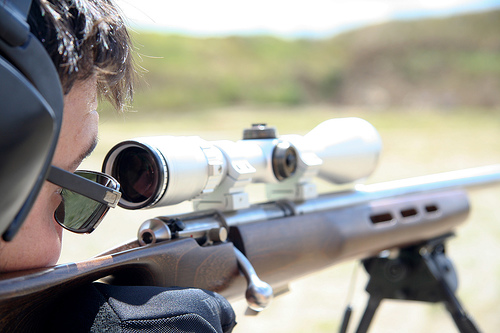
A solid shooting rest isn't always available in the field when you need it. Sometimes you might have to shoot from a prone, sitting, kneeling or standing position.
None of these positions come naturally, so take time to practice each at the range. 16 | Fixing Flinch
Cure yourself of flinching by having a partner load your gun at the range. Have him occasionally load a dummy round with the live to check your technique.
**
17 | Handy Storage Box**
A tackle box makes a great storage kit for gun-cleaning supplies. The dividers in the lure trays neatly separate different sizes of bore brushes, swabs and patches.
Get one with plenty of room for bottles of solvents and other necessary cleaning gear. 18 | Mark Your Ramrod
Before hunting with your blackpowder rifle, mark the ramrod at the point where the bullet
or ball seats properly
against the powder charge. Improper bullet seating creates a potentially dangerous situation. A glance at the marked ramrod will assure you that you've positioned the projectile properly for a safe shot. 19 | Paint Your Horns
For safety's sake, it's a good idea to spray your rattling horns with brightly colored paint, preferably hunter orange or chartreuse.
This may prevent you from being mistaken for a deer by a careless hunter.
**
20 | Don't Chalk Box Calls**
Some turkey hunters use chalk on their box calls to increase friction, but experts say it's not needed on a properly tuned call.
In damp weather, chalk acts as a sponge, absorbing moisture that can gum up your call. This dampens the ringing tone of a good box call. If your call is constructed from good-quality wood, the call actually will sound better without chalk. Photograph by AMagill via Flickr.
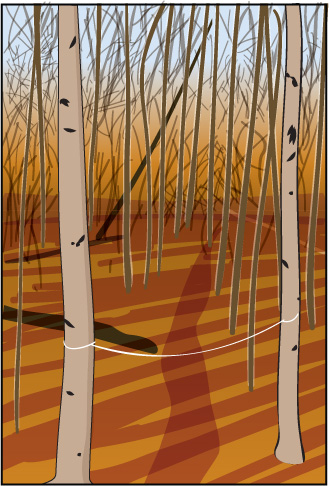
Here's a simple, inexpensive way to nail down a good location for your deer stand. Look for deer trails in the area you plan to hunt, and tie a piece of light-colored sewing thread waist-high (or lower) between two trees on either side of a trail. Do likewise at other trail spots. If you return and find a thread broken, you'll know deer are still using that trail, and you can place your stand nearby.
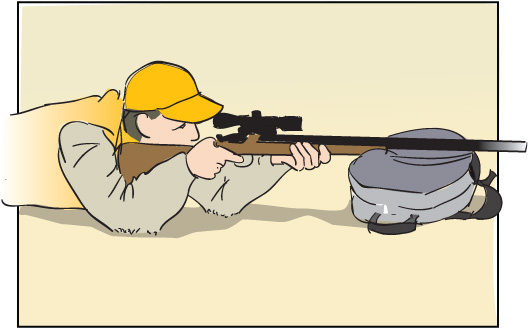
Never rest your rifle barrel directly against a solid object when you're shooting in the field.
Cushion the forend by placing something between the rest and the rifle. A day pack, a rolled-up jacket, a scrunched-up hat or even your hand will suffice.
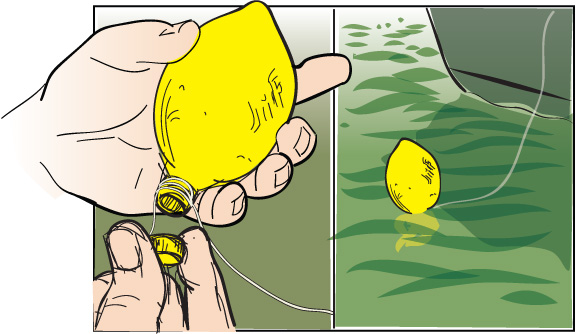
Lemon-shaped juice containers make great floats for the big baits used when fishing for stripers or catfish. Loosen the cap, wrap your line around the screw threads, then tighten the cap. The bright yellow really stands out on the water.
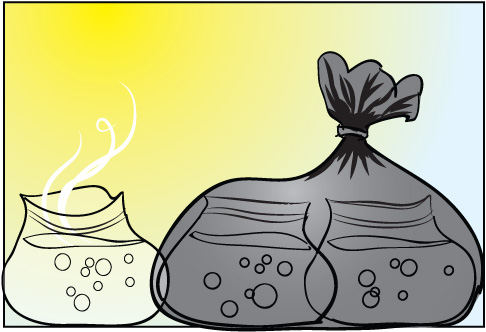
To keep hot water handy for use around camp:
*Fill several zip-seal plastic bags with water and place them inside a black plastic garbage bag.
*Lay the bag in direct sunlight on smooth ground. Make sure there are no sharp sticks or stones beneath the bags that could puncture them.
*In just a few hours, the water in the zip-seal bags will be hot.
*Carefully remove a bag from the garbage sack (you might need gloves to hold it), unzip one corner and pour the hot water where you need it.
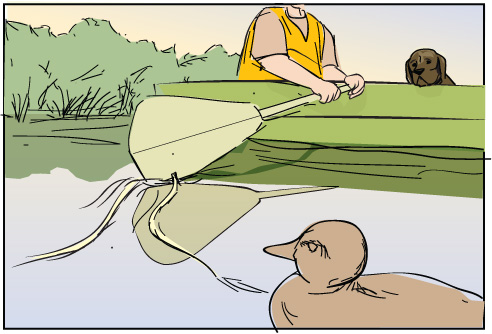
Reaching out of a boat to pick up decoys isn't safe. A better way is to use a customized long-handled boat paddle. Cut an upward-slanting, 1⁄2-inch-wide notch near the lower end of the paddle's blade. You then can reach out with your paddle to snag decoy lines in the notch, almost without missing a stroke.
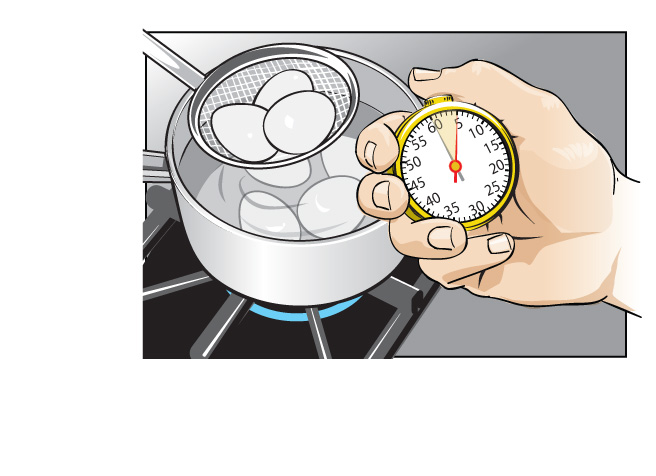
To keep eggs fresh in camp, dip them in boiling water for exactly 5 seconds, and then let them cool. This creates a film inside the shell, which makes the eggs airtight.
Treated this way, they should keep for weeks without refrigeration.
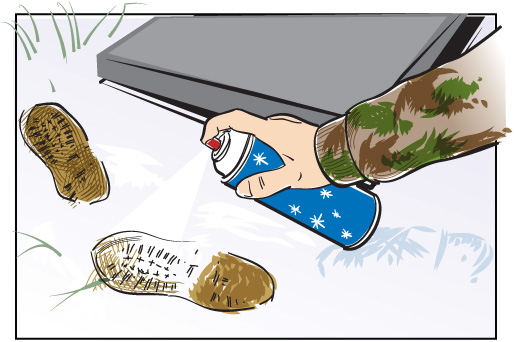
After a light snowfall, Christmas tree snow from an aerosal can is great for concealing bare patches around your pit blind created by foot traffic, which can spook ducks and geese. The spray-on snow also works well for camouflaging pit lids.
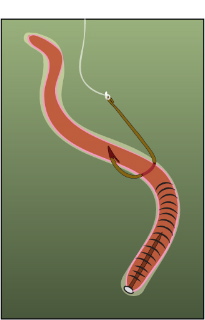
The wacky worm (a straight-tail plastic worm hooked through the middle) catches lots of bass.
In some situations, it might catch even more if you
insert a small nail straight into the worm's nose. This makes the lure stand straight up with its tail wagging, a special action sure to attract nearby bucketmouths.
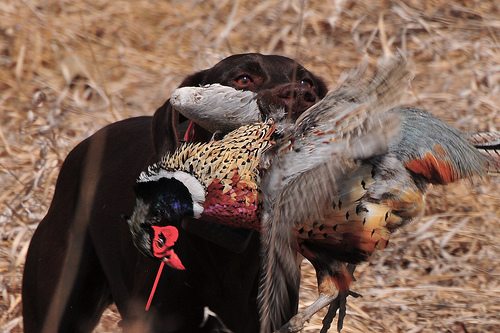
A good decoy set-up for spring turkey hunting is a combination of hen and strutting jake, which works on both of a gobbler's spring mandates–breeding and dominance.
And because a gobbler will almost invariably address the jake decoy head-on, you can position it so you'll have the best shot when the gobbler stops and prepares to do battle. 30 | Rooster Or Hen?
When pheasant hunting, if only roosters are legal, look for the rooster's white neck ring.
If you judge sex by watching for long tail feathers, you might shoot some long-tailed hens or hold fire on shabby-tailed roosters.
**
31 | ATV Add-Ons**
A simple way to jazz up your ATV is to add racks to maximize space for hauling your gear.
Want extra comfort? Add a throttle extender so you can rev up your ATV with your whole palm and not just your thumb, or replace your rough handlebar grips with gel models that relieve shock and fatigue. 32 | First-Aid Kit for Gear
One item you should carry on all extended outings is a gear first-aid kit. Use a small waterproof container to hold items you might need to make repairs around camp.
Here's a checklist to get you started, but you'll want to weed out some items and include others based on your own gear.
*Duct tape
*Heavy-duty needle and thread
*Stove/lantern parts and repair tools
*Nylon cord and strap material
*Extra bulbs and batteries for headlamps and lights
*Fabric patches with adhesive
*Sleeping pad and tent repair kits
*Extra buckles for pack repairs
**
33 | Zipper-Pull Additions**
The little grab-tabs on the ends of zippers can be hard to find and difficult to hold, especially when you're wearing gloves or mittens.
Make them bigger by adding a ribbon, piece of cord, whistle, thermometer, key chain, paper clip or even a strip of duct tape. Photograph by nugefishes via Flickr.

If your landing net has a hole in it and you're planning to buy a new one, use the old netting to make a simple boat anchor. All you need are some rocks, a big carabiner and an anchor rope.
Fill the net with rocks or other weights, then gather the net perimeter and clip it together with the carabiner.
Tie the anchor rope to the carabiner and you're set. 35 | Ax Sharpener At the Ready
Forgetting a file to sharpen your camp ax or hatchet can be a real hassle. Tape a small file to the tool's handle with duct tape wrapped all around so the file won't get wet and rusty. 36 | Straighten Springy Line
Monofilament line can get coiled and spring off your spinning reel when you open the bail.
Fix this by removing the spool full of line and soaking it in warm water for 10 minutes. This softens the line so it's more manageable. 37 | Save Sliding Bobbers
If you snag a hook on a sliding-bobber rig and have to break the line, the sinker might come off and you'll lose the bobber.
A good remedy is to use two bobber stops on the line–one above the bobber at the depth you want to fish and one a few inches above the sinker. Then, if the sinker breaks off, the extra stop will keep the bobber on the line. 38 | The Magic Of GPS
Now there are numerous GPS programs you can download free from the Internet to create custom topo maps, show your family in real-time where you are and much more.
For information, visit maps-gps-info.com, where you'll find all sorts of in-depth info on GPS technology. 39 |Smartphone Apps
Hunters and anglers who use an Apple iPhone, Motorola Droid or other "smartphone" can find a variety of useful apps. If you use a trail camera that automatically uploads its photos to a website, for example, there's an app that allows you to monitor images from your phone.
You can track moon phases, tides and sunrise/sunset times, use your phone as a compass, find the cheapest gas, mark and find your tree stand, get weather forecasts, calculate an unofficial score for your deer or elk, call game, download maps and much more.
Visit apple.com/iphone/apps-for-iphone/. Photograph by Gonzalo Baeza Hernandez via Flickr. #
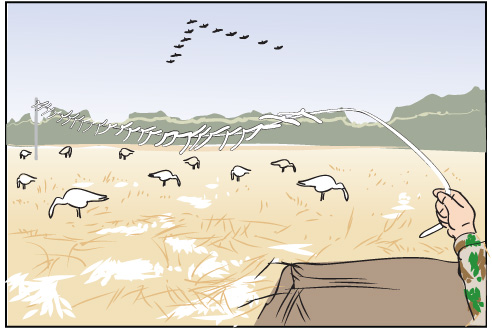
Here's a great way to add bird-attracting movement to your snow goose decoy spread.
*Dig a post hole in the middle of your spread and erect a 10-foot pole with a 150-foot length of nylon cord attached to the top of it.
*Tie 30 white rags (a cut-up bedsheet works well) an equal distance apart on the line, and keep the end of the line handy beside you.
*When geese approach, make the line undulate by snapping the line up and down.
These rising and falling "geese" help attract the attention of snows that might pay no attention to just one or two waving flags.
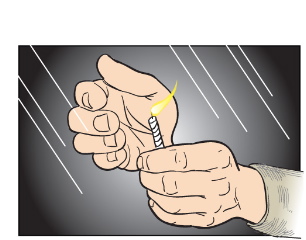
Remember those trick candles someone put on your birthday cake–the ones that stayed lit no matter how hard you blew on them? Because they won't blow out, these candles make great additions to your fire-starting kit.
Light one with a match or lighter, keep it sheltered in the cup of your hand and use it to ignite your tinder, even when it's windy or a bit rainy outside.
Liberally wet your fingertips to extinguish the candle and save it for another use. You'll find the candles in the bakery departments of many discount and grocery stores.
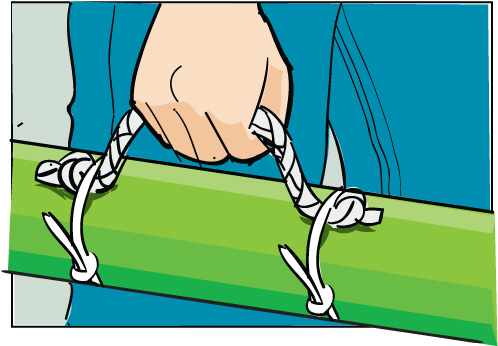
Round rod cases often have no handle and can be difficult to carry if you're traveling with other luggage. Installing a cheap handle is easy.
All you need are two plastic zip ties and a short piece of soft rope knotted at each end. Position the rope where you want a handle and cinch a cable tie over each end in front of the knot. The new strap makes carrying the case much easier.
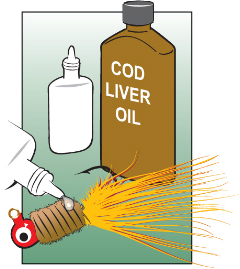
While anglers can choose from a wide variety of commercial scent products, there's another alternative that works almost as well.
Fill an empty nasal-spray bottle with plain cod liver oil. Squeeze a drop of oil to the tip of the bottle, rub your lure in it and you're ready to fish.
This works especially well with marabou and bucktail jigs, and can sometimes make the difference between lots of bites and none at all.
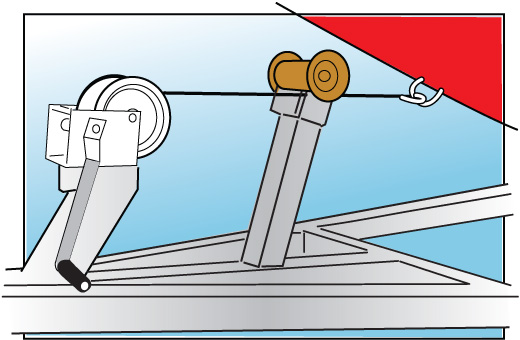
When launching a boat in freezing winter weather, be sure to keep the trailer winch cable hooked until the boat is in the water; then hook up again before you pull the boat out.
Boat trailers, especially bunker-type trailers, can get icy and slippery on the drive to the launching area or while sitting in the parking lot. If the boat isn't hooked, it could slide off onto the concrete ramp instead of into the water.
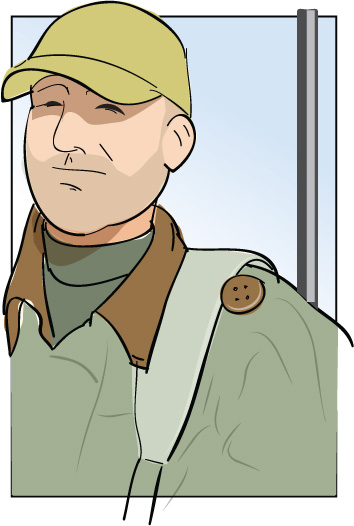
It's aggravating–you have a sling on your gun, but it keeps sliding off your shoulder when you walk.
Remedy this by sewing a large button on each shoulder of your hunting coat. Place your rifle sling over the button, and it will slip no more.
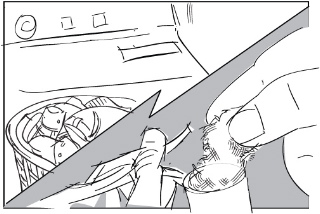
Clothes-dryer lint stuffed in a waterproof container and kept in a pocket or survival kit is excellent tinder for fire-starting. You can pack a surprisingly large amount in a very small container, like a 35mm film canister. It costs nothing, weighs almost nothing and, if you add a few strike-anywhere matches, you have a ready-made kit for building a blaze.
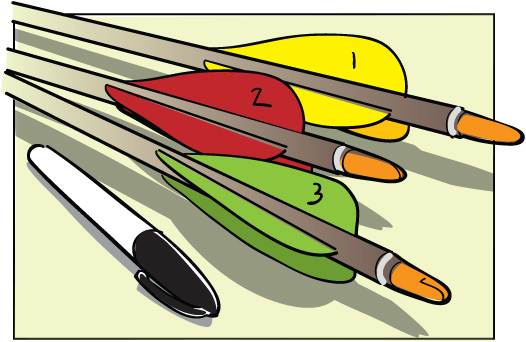
Practicing with your bow before hunting season? It's easier to identify a single flawed arrow if you number all your arrows. Use a waterproof marker to write the number on the vane. Now, if arrow 4 continually shoots low, while your other arrows are grouped, you know it's not poor form causing the problem, but the arrow. You'll also know which arrows are most accurate.
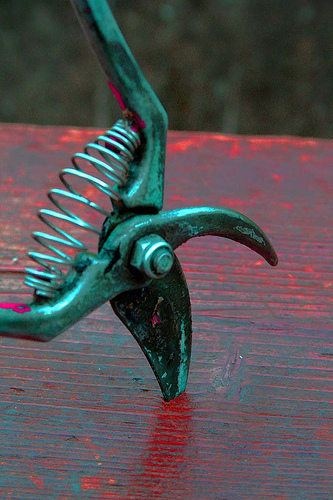
Make your plain-Jane crappie jigs more attractive to big slabs by adding a curly-tail grub. Run the soft-plastic up the hook so it butts against the feathers, hair or tube.
The extra undulating motion might be just what you need to entice inactive panfish. 49 | Best Online Deals
Want great buys on a variety of gear for hunting, fishing and other outdoor activities?
Visit sierratradingpost.com, camofire.com or sportsmansguide.com.
Be sure to check the clearance sections on major sites like cabelas.com and basspro.com. 50 | Eye Opener
An inexpensive tool for cleaning paint from jig eyes is a seam-ripper, available in sewing departments. Screw an eye into the handle to attach a lanyard. 51 | Pocket a Line Cutter
Those credit-card-shaped letter openers, available at many office supply stores, are great for cutting fishing line–they'll even cut braided line–and they fit inside a shirt pocket.
**
52 | Stake Out Your Boat**
A corkscrew-type
dog stake, available at pet supply stores,
provides a handy shoreline tie-up for your canoe, johnboat or other small craft. 53 | Snip It Quick
When dressing rabbits, squirrels and other small-game animals, a knife isn't the only tool you should use. Kitchen or pruning shears are better for safely and quickly snipping off each animal's feet and head when cleaning it for the table. Photograph by ti_lappin_tom via Flickr.

Got a hankering to do some fishing but didn't bring tackle? If there's a lake or stream at a nearby state or national park, stop at the park office. Many parks with good fishing waters have tackle available for loan to park visitors. More often than not, there's no cost involved. 55 | Minnow Drop For Perch
A yellow perch struggling on a hook stimulates other fish in the school to start feeding. When using minnows for bait, you can take advantage of this reaction by dropping some dead minnows into the water now and them.
Squeeze the minnows to empty their air bladders and then release them by the handful into the feeding zone. As the perch dart around gobbling the minnows, a feeding frenzy will begin.
A hooked minnow lowered to the school will be taken quickly.
**
56 | Three Fires for Extra Warmth**
In a survival situation, or when you or others are dangerously wet and cold, build three small fires and position yourselves in the middle. This allows you to share the heat and stay warm front and back better than with a single large fire. Also, three fires in a triangle is a distress signal. 57 | Trail Cam Tips
Not getting many photos on your new trail camera? The problem could be overuse. Many first-time users check their cameras daily to see results, but regular intrusions can disturb deer and other game animals.
Be sure your trail cam is placed in a spot that's easy to enter and exit without being detected, and avoid inspecting the unit for at least a week. Also be careful not to leave telltale human odor by touching the housing or mounting components with bare hands.
A scent-blocking spray should be used on the housing and mount.
_
Photograph by jervetson via Flickr._
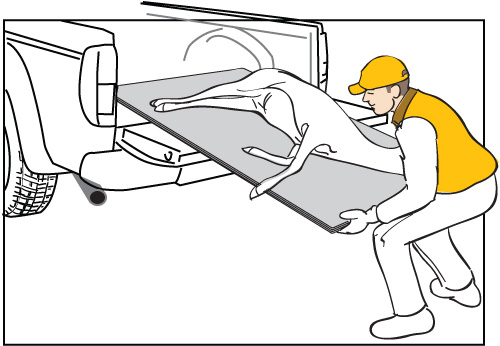
If your solo deer hunt is successful, you'll find it much easier to load your deer into your truck if you bring a sheet of 3⁄8- or 1⁄2-inch plywood cut to fit in the pickup bed.
*Drop the tailgate.
*Slide one end of the plywood to the ground.
*Roll the deer onto the wood.
*Now you can raise the lower end of the plywood sheet and slide it into the truck using your leg muscles rather than your back.
This reduces the risk of back injury and keeps your clothing cleaner, too.
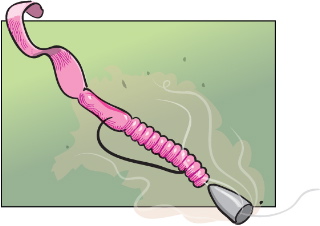
When bass aren't biting, here's a simple trick for Carolina- or Texas-rigging that might change your luck. Reverse the bullet weight so that the concave end digs into the bottom to create extra disturbance.
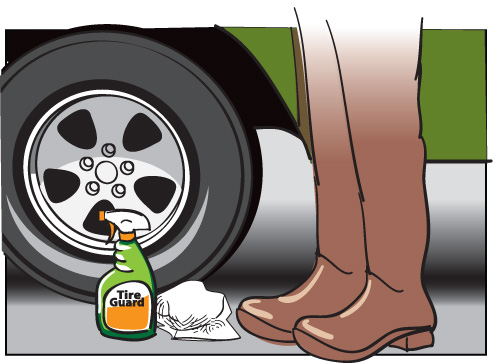
Extend the life of your rubber hip boots and waders by treating them three or four times a season with an auto tire protectant such as Armor All. Your boots will resist cracking and dry rot much longer.
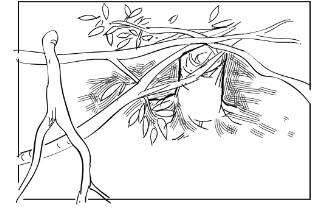
Leave 3-foot-high stumps when clearing small openings or cutting trees for firewood. Pile branches around each stump, laying one end on the stump and the other on the ground.
When you've encircled the stump, pile the rest of the cuttings at right angles on the framework to create a brush pile that can be used by quail, rabbits and other animals.
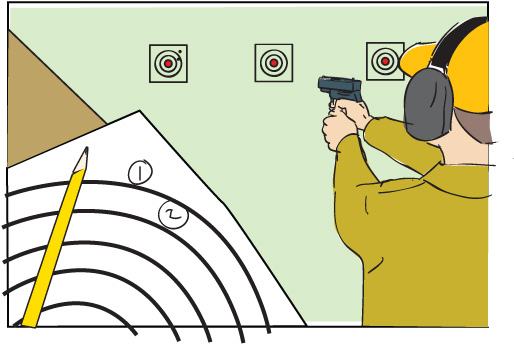
When you fire repeated shots at the same target, it's difficult to remember the sequence in which they were fired. Keep an identical target beside you on the shooting bench. As you fire each shot, locate
the bullet strike on the downrange target, then locate and number each corresponding strike on your shooting-bench target. Logging each shot helps determine the effectiveness of scope adjustments. If you flinch and shoot a "flyer," it's easier to ID its downrange location.
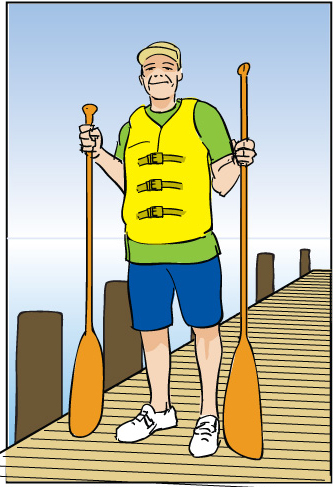
Want to choose a canoe paddle that's right for you? Stand straight and hold a stern paddle upright with its blade touching the ground. It should reach to about eye level.
A bow paddle should come to your chin or just below.
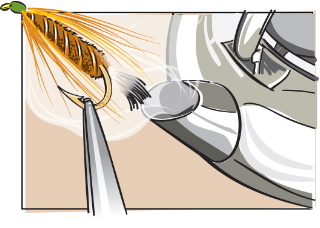
Want to rejuvenate feathers and bucktails on fishing flies matted with use? Use a hemostat or pliers to hold each fly in a steady stream of steam from the spout of a boiling tea kettle. You can also fix several at a time by placing them in a small colander over a simmering pot of water. This is also a good way to take the set out of natural (but never synthetic) fly-tying materials that have been stored awhile.
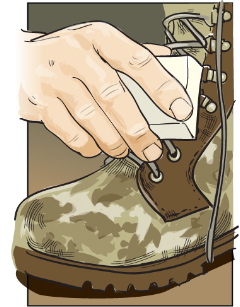
To help shed burrs easily, rub the laces of your hunting or hiking boots with paraffin before hitting the trail.

No matter what game animals you'Äoll be calling-ducks, deer, predators, whatever-when you find a call you like, buy two. You might break a reed, lose the call or have one freeze up in the blind. With two, you'll always have a spare-just in case. 67 | Quicker Picker-Upper
A large magnet is a handy tool to have near your fly-tying bench. Run it over the floor, bench and furniture occasionally to pick up hooks, weed guards and other tiny metal components you might not realize you've dropped. 68 | Finding Cold Cottontails
Cottontails have thin fur that offers poor insulation from the cold. To find them during inclement weather, it helps to think like a rabbit. Where would you go to escape the cold if all you had to wear was a light jacket? Start by hunting places that are both sheltered from the wind and open to warm rays of sunshine; then move to other locales offering protection. 69 | Trolling Motor Wave Machine
If your duck camp has a permanent blind, an electric trolling motor can be used to create movement in your decoy spread. Construct a frame from 2×4 lumber, paint it black or camo (be sure the motor is camouflaged, too), use a sledgehammer to drive it into the bottom in your spread and then adjust the propeller so it's just below the surface and pushing water through your decoys. This makes the decoys swim and is also a good way to keep the water from freezing in frigid weather. 70 | Connect With Calling Quail
When a bobwhite quail covey is scattered, the birds begin calling to rejoin each other as soon as possible. When birds scatter near dusk, the calls begin at once, because bobwhites prefer to roost together. However, as darkness falls, the birds quit calling so predators can't find them, and some birds must roost alone. At dawn, begin calling in the same area where you flushed the birds the night before, a good point to remember when you have to hunt without a dog. Photograph by leppyone via Flickr.
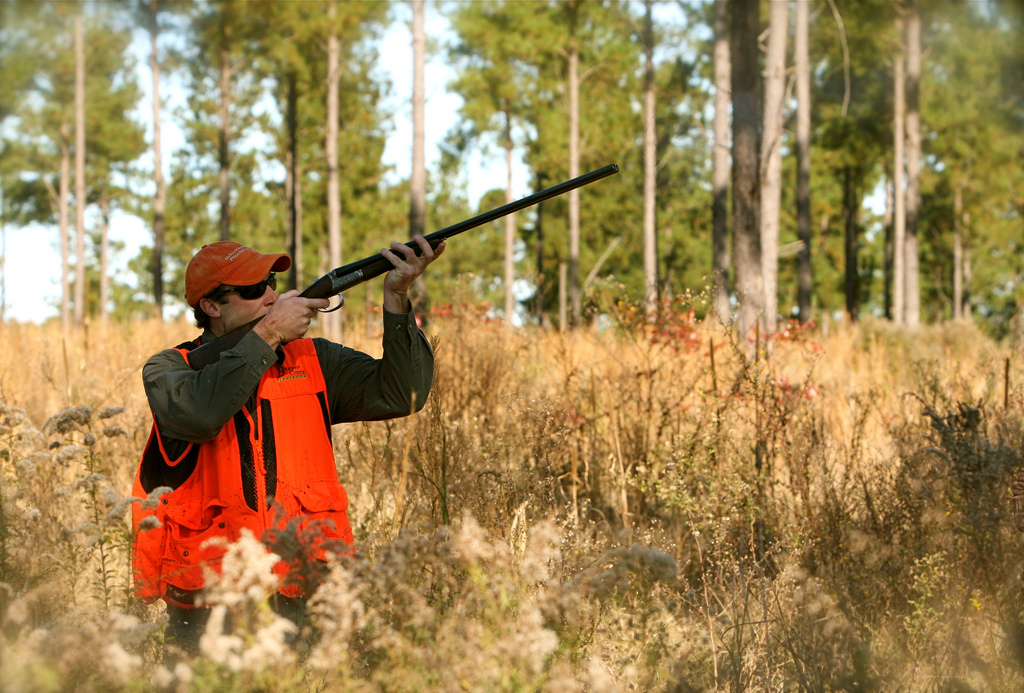
Cottontails usually seek an uphill course to evade pursuit because their longer hind legs afford them more speed uphill than down. So, when hunting hillsides, two or more hunters should separate, with at least one working along the hilltop. 72 | Set Up Right For Quail
When walking up on a covey of bobwhites ahead of pointing dogs, take care not to get between the birds and the nearest cover. Quail almost always fly to that cover regardless of where hunters are, presenting difficult head-on targets. 73 | Listen Up
The best squirrel hunters tend to be good listeners. The sound of rustling leaves can give a squirrel away. So can the sound of the rodent- sharp teeth gnawing on a nut or cuttings falling to the forest floor. Also listen for barking or chattering squirrels. 74 | Cats Love Dogs
Did you know this? That catfish you'Äore hoping to catch loves hot dogs as much as you do. While you're roasting a wiener on a stick, you can use another one for bait. Just slice it into chunks, run a hook all the way through one piece and cast it out onto the bottom. If a catfish is around, he'll gobble it up quicker than a kid eating a chocolate bar. Then you'll be frying catfish for dinner instead of eating frankfurters. 75 | Trail Marker
When hunting or tracking game through unfamiliar country, you might need to mark your trail. Instead of using paint or reflective tacks or tape, carry some bright, neon-colored chalk to leave recognizable signs on trees or rocks. (The color or colors used or special markings will also help you communicate with hunting partners.) The next rainfall will erase your trail markings. Photograph by pocketwiley via Flickr.
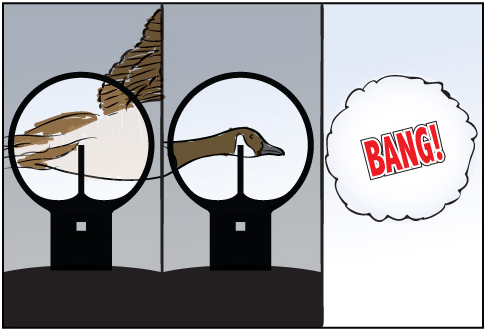
To establish a proper lead when taking crossing shots at ducks or geese, remember the three Bs: butt, beak, bang! Swing your shotgun from behind the bird. Move through its butt and beak. As the muzzle comes through the bird's beak, pull the trigger while continuing to follow through.
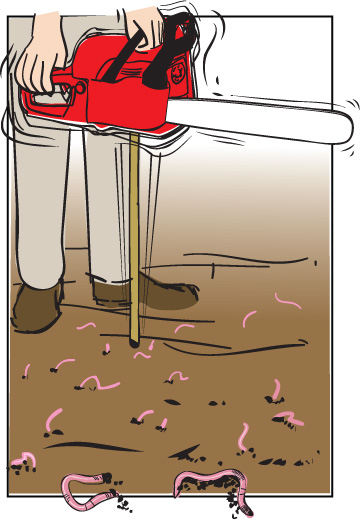
In the hills of Arkansas, some folks collect fishing worms using "The McCulloch (Chainsaw) Technique."
*Begin by driving a 3-foot wooden stake 6 to 8 inches deep in loamy soil.
*Place the wide bottom of a running chainsaw, with the cutting chain either removed or disengaged, on top of the stake.
*Wait for the worms to surface as they are coaxed from the soil by the chainsaw's vibrations.
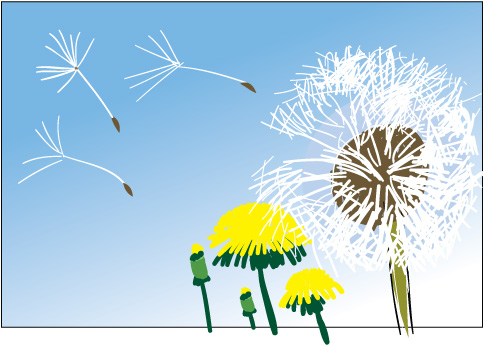
A good way to tell the wind's direction is to use the fluffy seeds from a milkweed or dandelion plant. Place the seeds in a sealable plastic bag, then drop some of the fluff into the air and watch which way it goes. The seeds are natural, so they have no strange smell, like the powders used by some hunters.
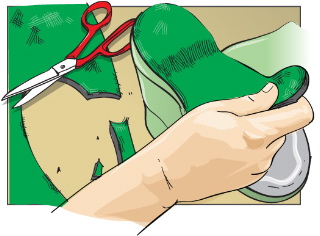
Are the felt soles of your waders worn out? Replace them with scrap outdoor carpeting cut to size, cleaned thoroughly and glued on with waterproof epoxy. The carpet provides as much traction as felt, will outlast it and absorbs less water. Scraps can also be purchased at home-improvement stores for next to nothing.
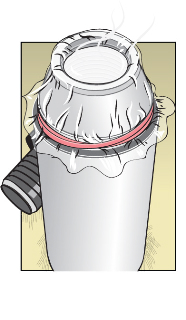
The deer scent you use will disperse better if it's warm, rather than cold. Here's a simple way to warm it while on your stand.
*Bring a Thermos full of hot coffee or cocoa, some plastic cling wrap and a heavy rubber band.
*Place a piece of the plastic over the top of the opened Thermos and press gently in the center to create an indentation.
*Secure the plastic wrap with the
rubber band.
*Now pour a little scent into the
indentation.
*It will be warmed by the hot liquid and dissipate much better, increasing its effectiveness.
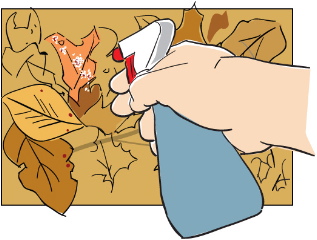
A small spray bottle full of hydrogen peroxide makes it easier to follow a blood trail on freshly fallen leaves. Spray the peroxide and watch for foaming, which indicates blood is present. This technique becomes especially useful when leaves are wet and trailing is difficult.
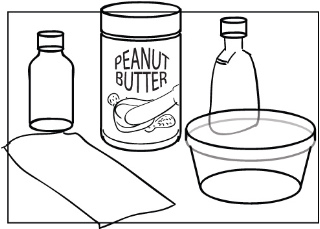
One popular homemade deer
attractant, long used by Southern hunters, is designed to arouse a deer's curiosity.
*Make it by mixing 2 ounces anise oil, 1 ounce pure vanilla and 1 tablespoon creamy peanut butter.
*Keep it in a small sealed container. Dab liberally on a 4-inch-long strip of cloth.
*Hang the cloth over a limb within shooting range of your stand.
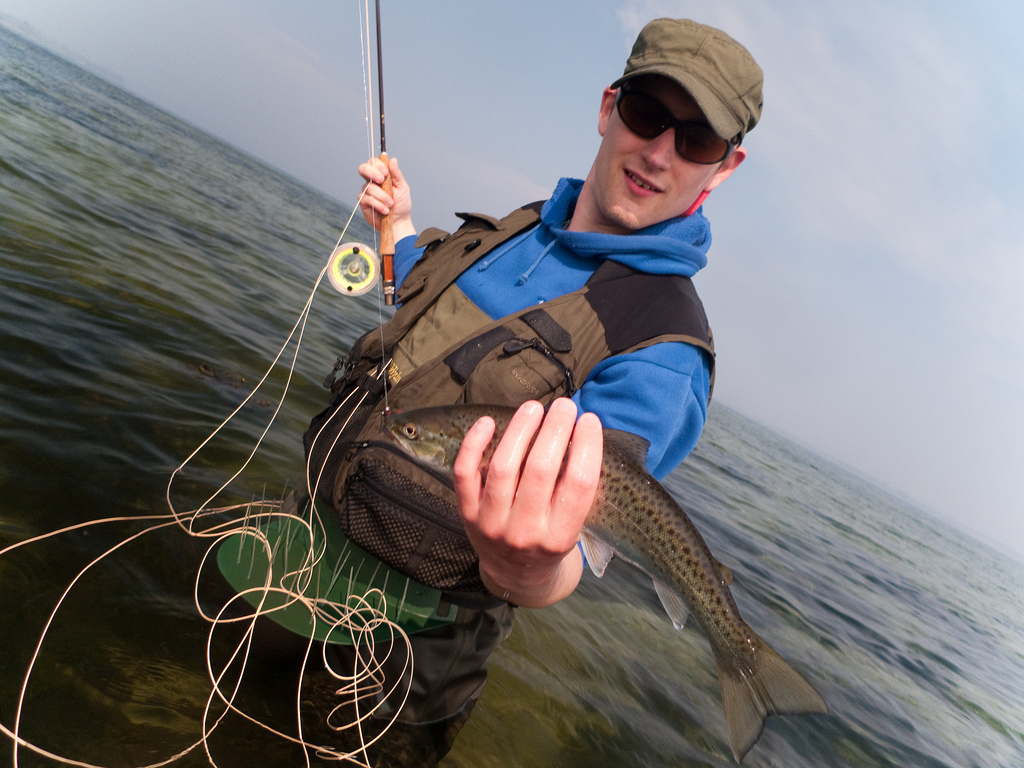
To reduce the amount of human scent on your hunting clothes, toss the garments in a clothes dryer with a pillow case or cloth bag filled with fresh pine needles or sagebrush leaves. Be sure the bag is tied shut, and let the clothes tumble 15 minutes or more on a gentle setting before removing. 84 | How to Fillet A Deer
When butchering a deer or other big-game animal, keep a fish fillet knife handy. The thin, flexible blade works much better than a hunting or butcher knife for deboning meat in hard-to-reach places or butterflying steaks from the backstrap. 85 | Entice Trout With Wax Worms
Wax worms are great trout baits. These larvae of bee moths frequently are sold at docks and bait shops in trout country. Impale three or four on a fine-wire hook, and leave the ends wiggling enticingly. Then squish a miniature marshmallow onto your line just above the hook. The marshmallow serves as a float and your wax worms will now be buoyant and visible to hungry trout. 86 | Whet or Dry?
Contrary to what many people believe, you shouldn't put oil or water on a whetstone when you're sharpening a knife. If you do, metal fragments will become trapped in the liquid, resulting in a ragged edge on the blade. Always keep your whetstone dry. 87 | Camo for Your Stand
Don't toss that old artificial Christmas tree. Use wire cutters to snip off some branches so you can use them to camouflage your ladder stand. Use plastic cable ties to attach the branches to the platform and ladder, then open them up to fill in any gaps. 88 | Dry When You Need It
A 2-pound coffee can makes a terrific toilet-paper holder for your backcountry camp.
– Punch a hole in one side of the can near the bottom.
– Then punch another hole opposite this one.
– Run some wire or cord through these holes, and secure the can to a tree (with the bottom side of the can resting against the trunk) near the latrine. Put the roll of toilet paper in, snap on the plastic lid, and the paper stays handy yet dry. Photograph by kasperbs via Flickr.
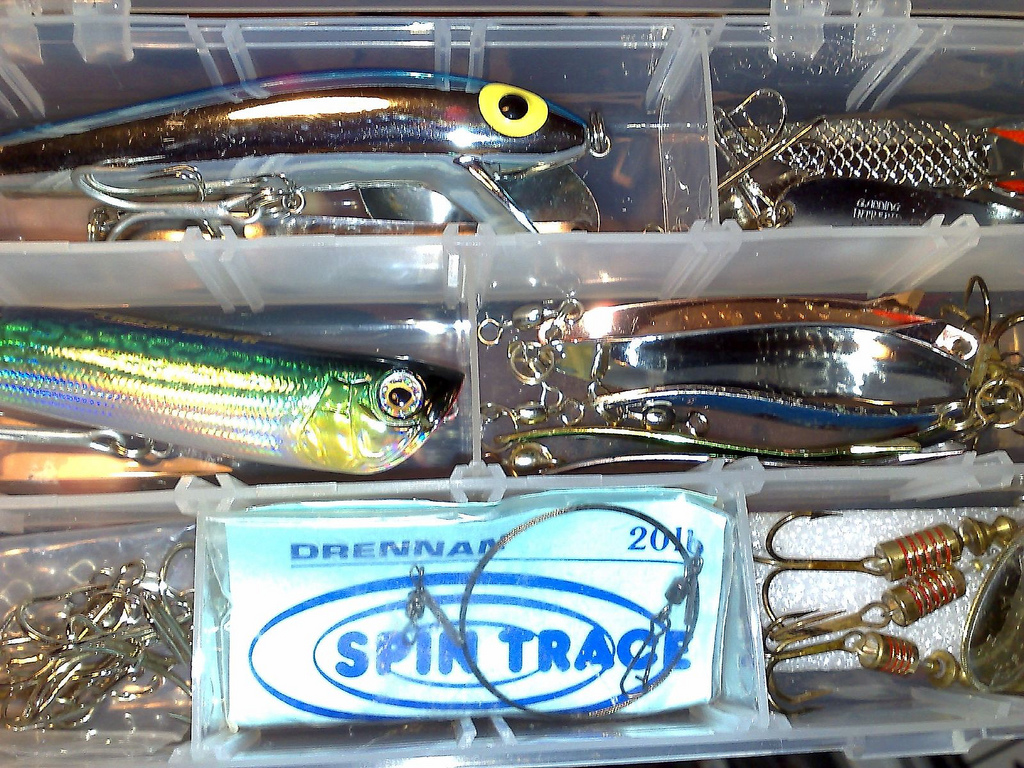
Left unprotected, lead decoy weights will oxidize, leaving stains on your hands and decoys when handled. You can easily protect the weights by dipping them in some of the rubberized plastic coating often used to protect the handles of tools such as pliers. Just dip each weight in the liquid coating, allow the excess to drip off and set the weight aside to dry. No more corrosion. One can of liquid rubber will cover several dozen weights. 90 | Avoid Steel Shot Lock-ups
When rinsing just-dressed waterfowl at home or camp, always place the birds in the side of the kitchen sink opposite the garbage disposal. Unlike softer lead shot, steel-shot pellets, especially large shot sizes, can wreck your disposal. 91 | Pipe Cleaner Uses
Cleaning a smoker'Äos pipe is just one of many uses for pipe cleaners. Here are more reasons to keep some handy:
– Wrap a short piece around a hook and you have a serviceable fishing lure.
– Use as a twist tie on a bread bag or garbage sack.
– Thread one through two eyelets for an emergency shoelace.
– Clean the gas burners and fuel jets on your camp stove.
– Remove hard-to-reach gunk from your gun or fishing reel.
– Run through the eyes of like-sized sinkers, spinners, etc., to keep them organized.
– Use a pair to securely hang a lantern. 92 | Lure Compart-ments
Use clear, snap-lock videotape boxes to organize your soft-plastic lures by color, size or style. The boxes are transparent, so you can quickly find the lures you need. Photograph by Podknox via Flickr.
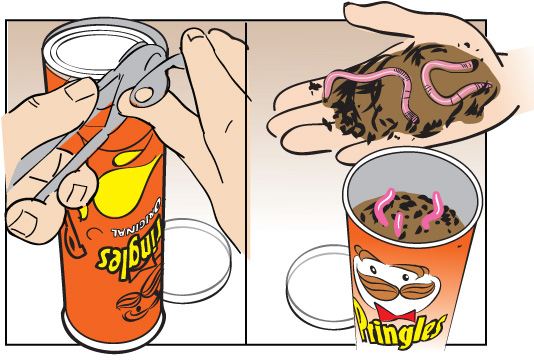
Save an empty Pringles potato chip container and two snap-on lids to make a perfect worm holder. Use a can opener to remove the canister's bottom, then put a snap-on lid on each end. Worms will go to the bottom of an upright container. Simply turn the container over when you need bait.
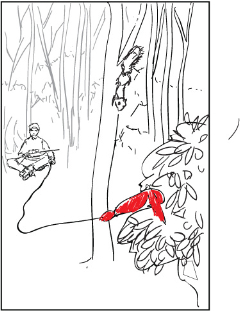
When a bushytail plays hide-and-seek by scurrying from one side of the tree to the other, tie a red bandanna and a long string to a nearby bush. Then go to the other side of the tree and shake the bush by pulling the string. The squirrel will come around to your side, so you can get a shot.
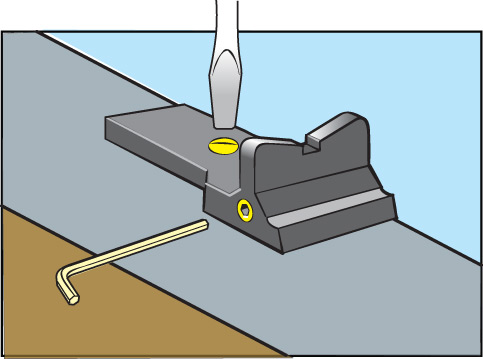
To sight-in a rifle with open sights, move the rear sight in the direction in which you want the bullet to go. Move the front sight in the opposite direction. To make the rifle shoot higher, raise the rear sight. If your sights have to be moved by tapping, use a nylon-tipped drift and tap gently so you don't damage the finish.
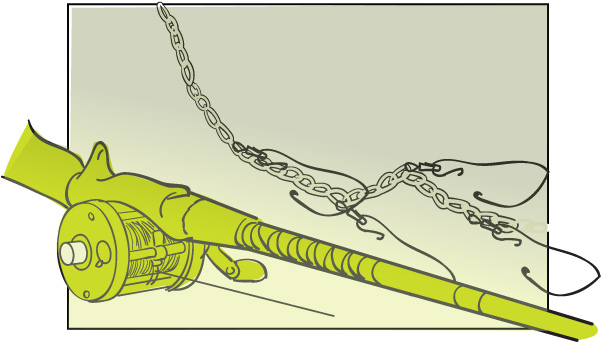
So, you dropped your rod and reel overboard. First, throw out a marker buoy to mark the spot. Then tie a metal fish stringer on a heavy fishing line, open the stringer's snaps and drag it across the bottom. The prongs on the snaps should snag your gear if you hit the right spot.

Before trying to dig out a splinter (using a heat-sterilized needle and tweezers), chill the skin around the area with a piece of ice or an ice pack. This helps dull the pain so that the sliver can be more quickly and easily removed. 98 | Bass Combo
A superbly effective combination lure for spring black bass is a shallow-running crankbait or topwater plug with a 1/16- to 1/8-ounce jig trailing 3 feet behind. Remove the plug's rear treble hook, and hook a snap swivel into the empty eye.
Tie a 3-foot mono leader to the swivel. Attach the jig directly to the mono. 99 | Fly Keeper
Wind can blow your favorite dry flies right out of a sectioned plastic box. Prevent this by putting strips of magnetic tape in the bottom of each section. This will hold the hooks without mashing or breaking hackles. 100 | Sinker Trick
To make your bait rig more alluring, carefully scrape the lead sinker with a knife blade to expose shiny new metal. The added sparkle might be just what you need to entice inactive fish. 101 | Field-Judging Antelope
A trophy pronghorn is generally one with horns that are 16 inches or longer and 7 inches in circumference at the base. The prongs should be at least 5 inches in length. You can estimate horn and prong length by comparing their size to a mature buck's ears, which average about 6 inches long. You can also use the distance from the front edge of the horn to the end of the nose as an indicator. This measurement averages about 8 inches. If the horn bases appear wide from the side and fairly thick from front or back, they should score well in circumference points. Photograph by Petrified Forest Ranger via Flickr.
